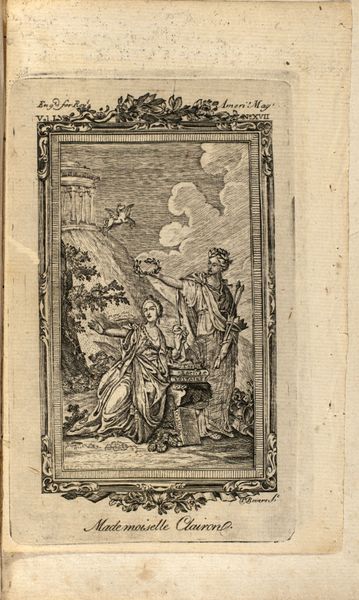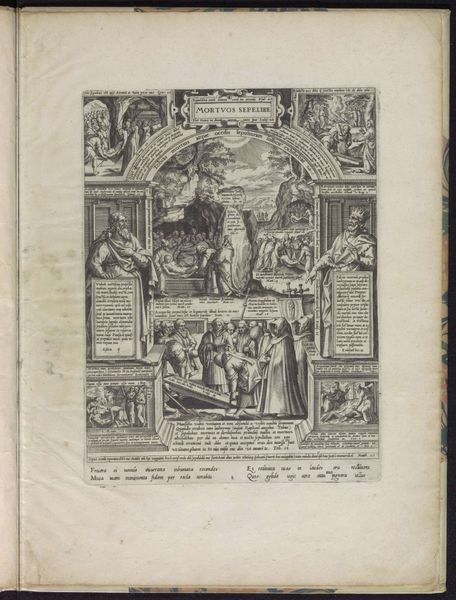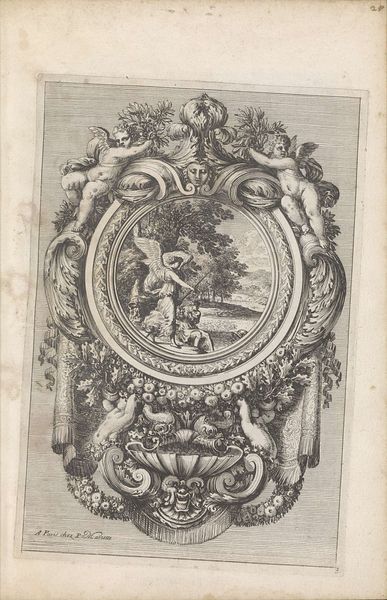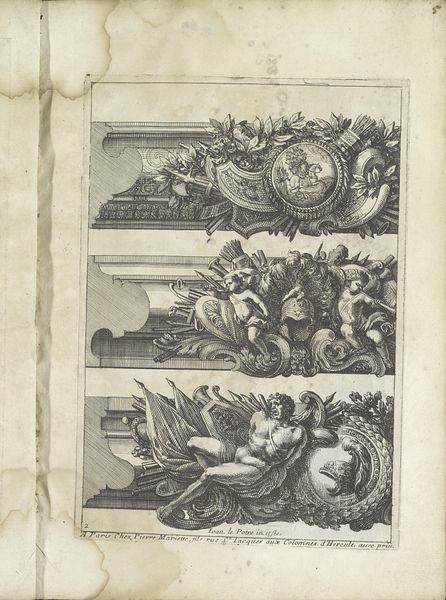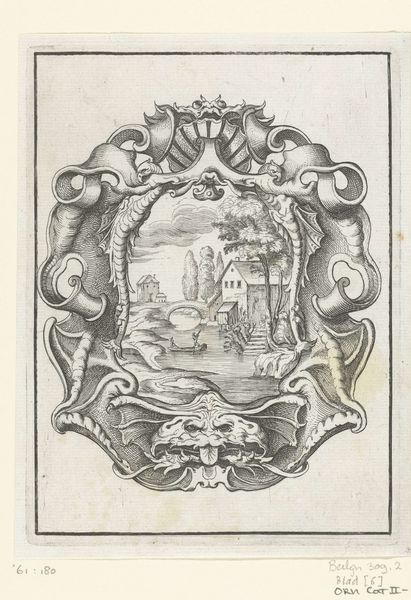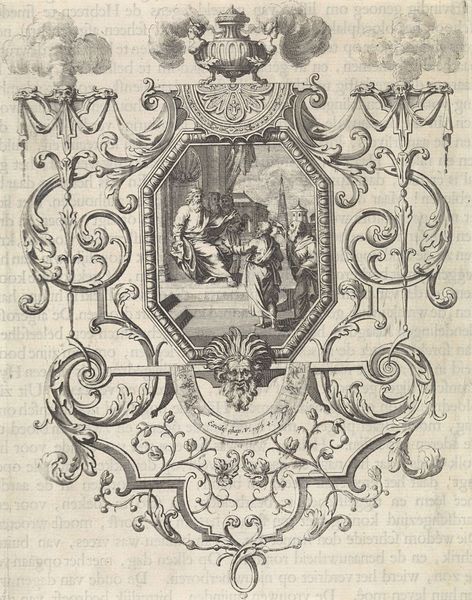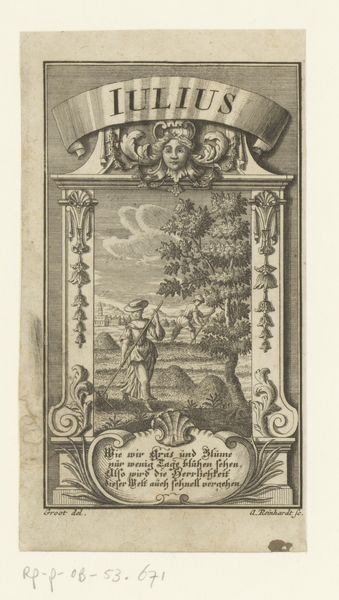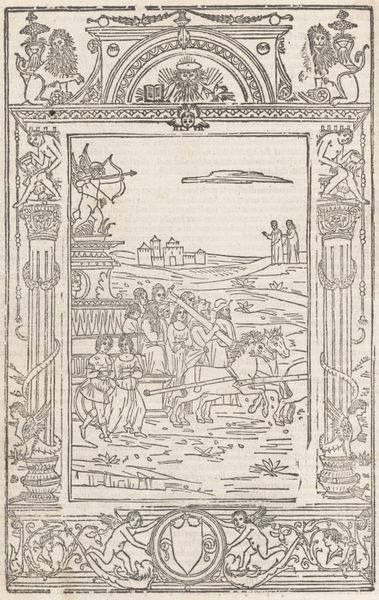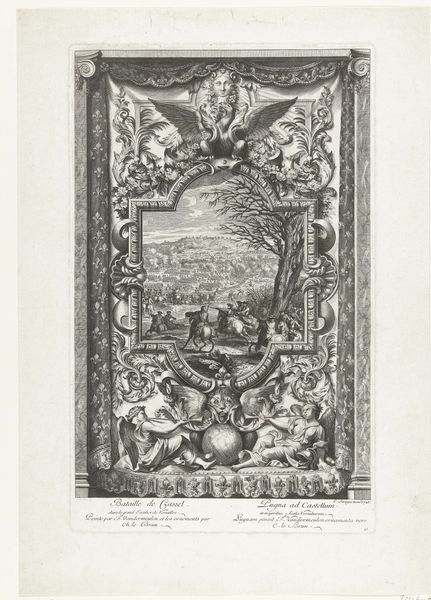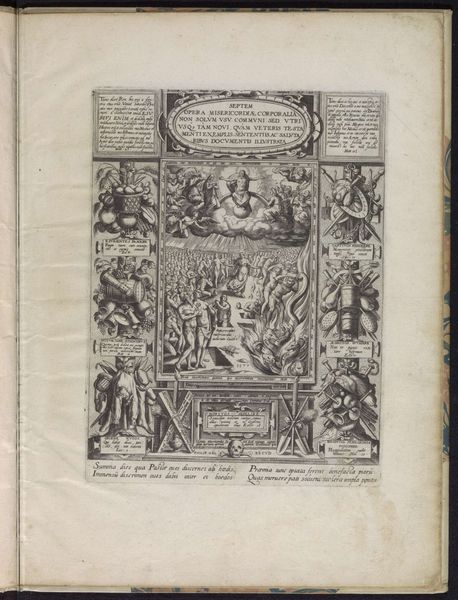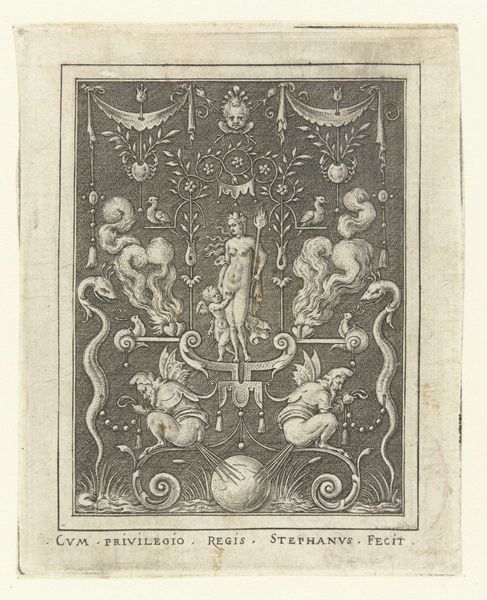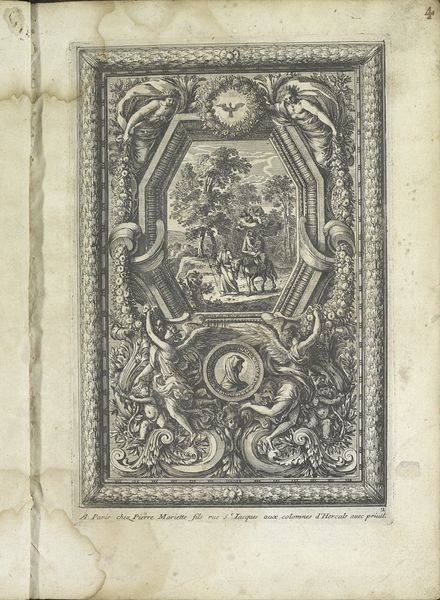
drawing, print, engraving
#
drawing
#
toned paper
#
baroque
# print
#
pen sketch
#
pencil sketch
#
old engraving style
#
sketch book
#
personal sketchbook
#
pen-ink sketch
#
line
#
pen work
#
sketchbook drawing
#
cityscape
#
history-painting
#
sketchbook art
#
engraving
Dimensions: height 223 mm, width 150 mm
Copyright: Rijks Museum: Open Domain
Editor: So, here we have "Panel with the Siege of a City in Cartouche" by Jean Lepautre, created around 1655-1657. It's currently held at the Rijksmuseum. This engraving on toned paper strikes me as incredibly intricate, almost overwhelming in its detail. What story do you think it's trying to tell? Curator: That's a keen observation. Let’s consider this print in its historical context. Seventeenth-century art often served a propagandistic purpose, reflecting the power and glory of the state and its leaders. Look at the central image: a battle scene, likely depicting a siege, framed within a lavish cartouche. How do you think that juxtaposition speaks to the artwork's message and its audience? Editor: Well, the chaos of the battle seems to be deliberately contained and almost glorified by the ornate frame. Almost like it’s meant to impress, not necessarily to show the horrors of war. Curator: Precisely! The artistic style – a highly decorative Baroque – emphasizes grandeur and control. Think about the function of prints during this era. They were a crucial means of disseminating information and shaping public opinion. This image, mass-produced and distributed, would have visually communicated power. Does the composition itself suggest anything to you about whose perspective we're meant to identify with? Editor: I see that the attacking side is on horseback and shown prominently, whereas the defenders of the city look smaller and more contained. It definitely looks like we are meant to be aligned with the victors! Curator: Indeed. So, think about the museums and collectors who originally acquired pieces like this. They were not necessarily interested in a 'true' representation of war, but in art that bolstered their prestige and authority. What might that tell us about the public role of art during this period? Editor: It paints a picture of art serving the elite, almost like visual marketing for powerful figures. I hadn't considered how much the image itself could be a political tool. Curator: Exactly. Examining the history behind the creation, dissemination, and even collection of an artwork enriches our viewing experience and offers deeper socio-political insights into the past.
Comments
No comments
Be the first to comment and join the conversation on the ultimate creative platform.
